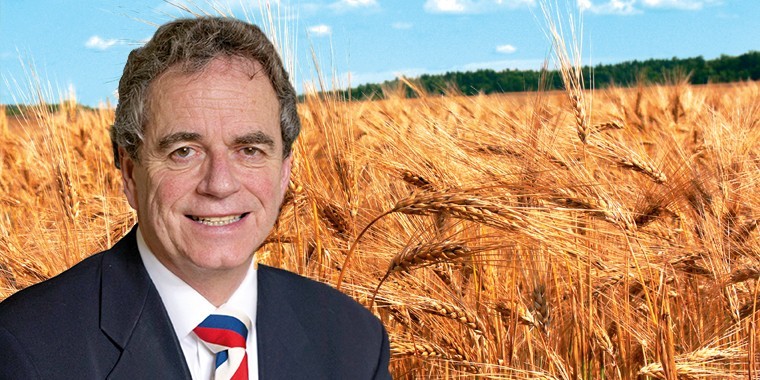Well the USDA/NASS re-survey on 12 August was not so glorious after all! Contrary to trade opinion state side, they increased the USA maize crop, precipitating big falls in Chicago maize and wheat futures. At best they have just kicked the can down the road! At worst they are over estimating the potential of a late planted maize crop, causing significant reductions in maize, and now feed barley values.
In the UK, on 28 August we still have fields of wheat in the South, waiting to be combined. It feels like the harvest has been going on a long time! Certainly the good July and early August weather saw some record crops of barley and wheat, with good milling and malting quality to match but, a handful of ‘heavy rain’ days seems to have done for the malting and milling quality on crops combined in the last two weeks of August. Overall the yields are still above average on cereals. Two months ago I suggested that we could be looking at a 2015 type of record crop. Well many of the wheat yields have already exceeded that. It is only because the planted area was less than 2015 that we have not produced a 16 million tonne wheat crop!
East Anglia was able to mostly complete its malting barley harvest, well before the South. We were going well until the middle of August. Since then samples have been coming in with varying levels of fusarium, split and pre-germinated grains. Some just about make the nitrogen and vitascope spec, but are just too weathered and failing on appearance. Our first four malting boats have gone, but German maltsters have plenty of French and Danish barley to choose from, so they won’t be taking any post rain weathered UK barley.
Early cut milling wheat, like the malting barley, was good quality; with premiums of up to £15 over feed. But, feed remains under pressure. UK grain exporters have risen to the challenge of needing to ship – an unknown – but very large tonnage, of UK wheat and barley by the end of October.
The world as we know it won’t end after 31 October, but exports to Europe may. Looking on the bright side; exporters like Openfield; will still be able to make big boat sales – 60 to 70,000 mt panamax size – to third countries; like North Africa and the far East; because its all priced in US dollars and there is no WTO tariff on sales from the UK to those countries.
Unfortunately, currency has gone against us in the last two weeks. Sterling was up to 92.5p to the euro, today it’s back to only 90.5p. I cannot believe we won’t have more ‘crashing over the cliff’ Brexit scenarios in the next six weeks. If we do, the exchange rate could go to parity with the euro, so the 90.5p could be 100p. Our advice on oilseed rape has been pretty good in the last nine months, so if as suggested last month, you sold ahead for Nov/Dec at about £350/£360 including oil bonus, you got in before currency strengthened, and did well.
By the end of September, we should have a much better idea of how the UK has performed, and more importantly, Russia and the Black Sea countries – as they dictate our feed wheat and barley export values. The game changer is your above average yields and your willingness to sell feed wheat while you can. We are very competitive with any origin just now but that will only maintain if you and we keep selling. If we stop another country will take our place. Don’t forget: if you sold your average eight tonnes per hectare last year at £162.50 that is the same as selling 10 tonnes per hectare this year at £130, so keep trading!




